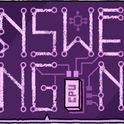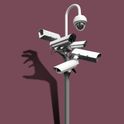When I first heard about humans and space, it was terrifying, because it was in the context of possible war between the USSR and US. But now I work for Nasa, at the Goddard Space Flight Center, Maryland, and I help design ways to measure the things in outer space, from nearby planets to the Big Bang itself. Space is where we are looking for hints about where we, and the whole Earth, came from.
I’m the lead scientist for the James Webb Space Telescope, which will be far larger and more powerful than the Hubble Space Telescope, and when it is launched in 2020 it will help us track down those hints. We’ll be looking at our history, from the formation of the first stars, galaxies, and black holes when the expanding universe was only a few hundred million years old, to the formation of stars and planets nearby, to the story of our own solar system. The project is an international partnership led by Nasa, with the European and Canadian Space Agencies, and many industrial partners and research institutes, including the UK Astronomy Technology Centre in Edinburgh. Europe is providing the Ariane 5 rocket.
Space is also a place for adventure, either in person, robotically, or in the imagination. And it’s still a place for possible combat. But people have been looking up at it for a very long time. People—and a few frightened animals—are the first Earthlings to go there. We seem compelled to explore; some say people are the only ones, but I doubt it. All creatures explore, in their own way, and even plants have their ways. Experiments with fruit flies show that some are more adventurous than others—that they have personalities. If we build a robotic civilisation, I feel sure that the robots will also have personalities and egos, and some will want to explore too.
Then there are practical matters. The first explorers of space were the astronomers, the record keepers of old. Then came telescopes and measurements of distance, shocking people with the immensity of the Solar System; even the Sun is 150,000,000km away. Then came the discovery that the Sun is part of a galaxy, and the galaxy is part of a system, and that distant galaxies are running away from us at immense speeds. We have already travelled the universe twice, once at the speed of light (as we take our pictures of the sky), and once at the speed of imagination. Suddenly our place seems small and our home insignificant. On the other hand, we might be the only civilisation anywhere near; we haven’t found our nearest neighbours yet, and maybe we never will. It’s just too darned far to go in a thousand lifetimes. That’s why we’re not in much danger from space aliens, but if there are any coming to visit, they are almost certainly robotic like the ones we might yet build.
Could we build a second home for civilisation on the Moon, or on Mars? Yes of course, but we don’t know how yet. At the moment we can only see how to travel, but we don’t know how to farm or become self-sufficient there, or how to govern and run an economy. Stephen Hawking thought we should do it anyway, because the Earth is subject to disasters, both natural and man-made. I would take his thought a bit further: I think we can and should develop ways to protect ourselves right here at home too. What would we need, if we wanted to protect life and civilisation by living in a sealed chamber in a cave for a hundred years, while we wait for a safe time to come out again? Quite a lot of new inventions, all of which would be useful for ordinary life. Needless to say, we should also do what it takes to protect what we have. If the political word “conservative” has a proper meaning, it ought to be for someone who conserves.
Do we benefit from space exploration? Yes, but we don’t feel it. We don’t feel the wars we didn’t fight, because we invested in sending astronauts to the Moon instead of dropping bombs. We don’t feel the space programme when we pull out our phones and know instantly where we are standing on the Earth. We don’t feel it when we turn on the television or surf the internet or talk to someone a world away, even though our information is coming to us from satellites. We don’t feel it when we get the weather report coming from the eyes in the sky.
But we could feel it, if we walk outside and look up, and remember that people walked on the Moon, that news from our fellow citizens is raining down on us from above, and that the story of our birth, with all its complications and implications, can be read from the stars. If you like our story, please thank the explorers who made it happen, all the way back to the people who walked out of Africa with stone tools and invented everything we have.
Read more from Prospect's space supplement












